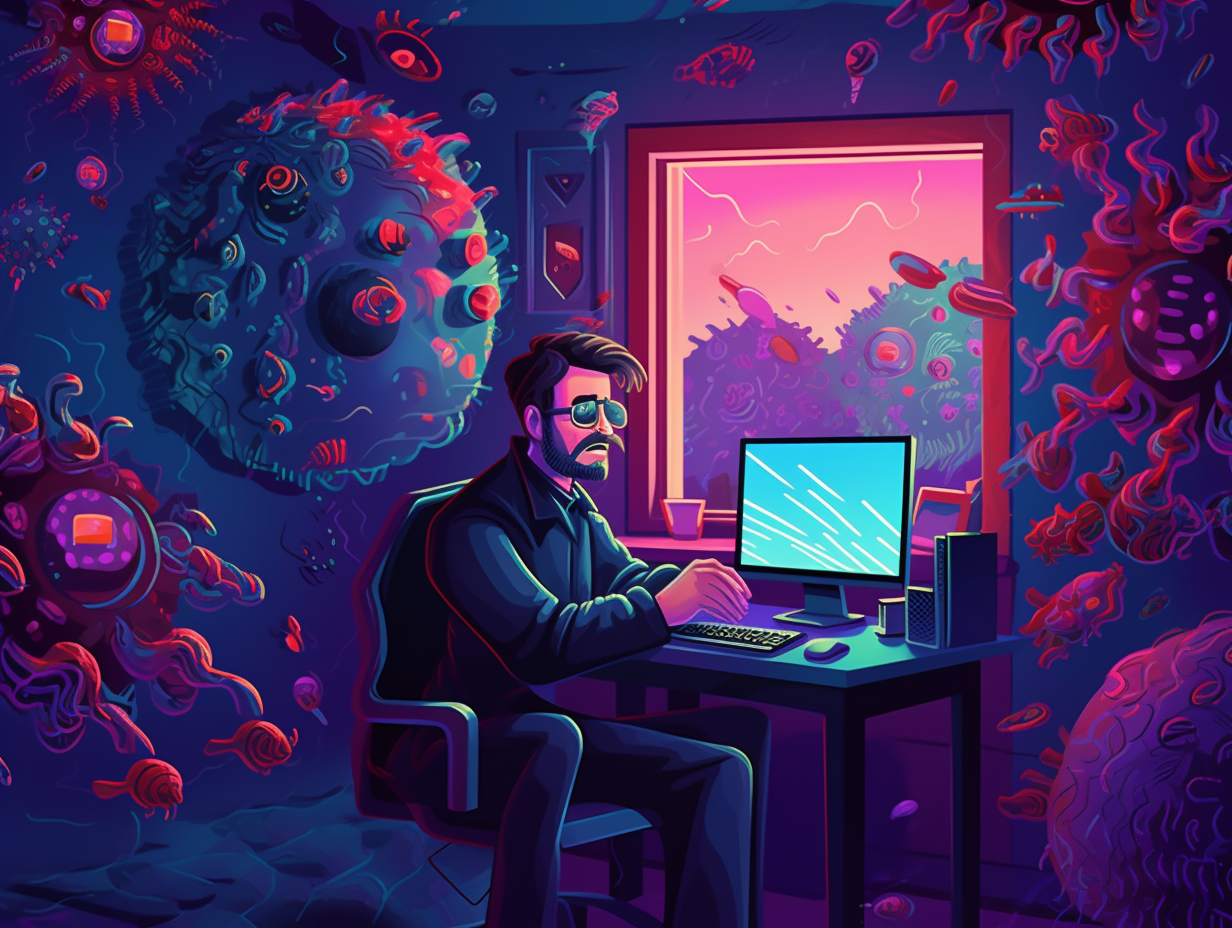9 Surprising Fun Facts About Computer Viruses You Won't Believe!

1. High School Hi-Jinks: Elk Cloner
Before "apples" turned bad and worms made their way into cyberspace: In 1982, a high school student named Rich Skrenta unleashed the first computer virus called "Elk Cloner" upon the world of Apple II computers, spreading poetic chaos on the screen every 50th use of the infected floppy disk, inadvertently becoming "patient zero" in the fascinating world of cybersecurity.
Source => blog.cengage.com
2. Poetic Pest: Elk Cloner's Verse
Who says viruses don't have a sense of humor? Back when floppy disks were all the rage and teenagers were tinkering with code instead of TikTok, a 15-year-old mastermind penned a poetic virus for his friends to deal with: Elk Cloner, the world's first personal computer virus, was created by Richard Skrenta in 1982. More of a mischievous annoyance than a cataclysmic catastrophe, this whimsical worm would make an appearance every 50th boot-up, sharing its self-proclaimed "personality" in verse with its unsuspecting victims while infiltrating their drives and chips.
Source => techtarget.com

Did you know Roman mail carriers could gallop a whopping 800 km in just 24 hours with their trusty steeds and relay of horses, all while dodging robbers and political enemies? Discover the fascinating world of the ancient Cursus publicus and the resourceful tabellarii! 🏇✉️
=> Fun Facts about Technology
3. Michelangelo's Malware Masterpiece
When the Teenage Mutant Ninja Turtles' favorite artist decided to dabble in the digital realm, the world was left shell-shocked: The Michelangelo computer virus, named after the renowned painter, emerged in 1991 and lay dormant until March 6th, 1992, when it would modify the bootup process of computers and potentially damage systems, spreading through floppy disks and making quite the splash in the computer security scene.
Source => informationsecuritybuzz.com
4. Stuxnet's Sabotage: No More Nukes!
In a cyber twist of "Bob the Builder" gone rogue: Stuxnet became the first known virus to cause physical destruction to industrial machinery, specifically targeting Iran's uranium enrichment facilities and throwing a massive wrench in their nuclear plans by spinning their centrifuges straight into chaos!
Source => nordvpn.com

5. Ikee Worm's Infectious Rickrolling
In a world where iPhones were plagued by boredom, one man decided to "rickroll" the world of Apple: In 2008, Australian programmer Ashley Towns unleashed the Ikee worm, a non-malicious virus that replaced iPhone wallpapers with an image of pop singer Rick Astley, infecting around 100 devices and sending a cheeky message about changing default passwords on jailbroken iPhones.
Source => computerworld.com
6. Mydoom's Spamtastic Spread
Talk about viral marketing gone awry: The Mydoom virus of 2004, which infected a whopping 500 thousand computers worldwide, contained a cryptic text message that led some to suspect it was the brainchild of overzealous e-mail spammers wanting to turn compromised computers into junk mail machines, and though it claimed the title of fastest-spreading email worm at the time, it was eventually out-virused by its contemporaries in total infections.
Source => en.wikipedia.org
7. Code Red's Wild White House Chase
In a classic game of virtual hide-and-seek, the infamous Code Red virus scoured the internet for its sought-after prey: the website of the prestigious White House. Alas, the sneaky website had donned an invisibility cloak, thwarting the pesky virus's malicious plans: The White House's IP address had been disassociated, leaving the Code Red virus flummoxed by its foiled denial-of-service attack.
Source => computerworld.com
8. Conficker Worm: The Houdini of Hackers
Move over, Harry Houdini! The Conficker worm was the ultimate escape artist in its heyday, dodging cyber security systems with skills worthy of a digital David Copperfield: This sneaky computer virus, spreading between 2008 and 2009, generated domain names algorithmically to evade detection and updates, while using peer-to-peer communication to spread and update itself. Even with worldwide efforts to snuff it out, Conficker continued to evolve, posing a significant and magical, yet frightening, threat to computer networks and their users.
Source => en.wikipedia.org
9. Melissa Virus: Porn-Star-Inspired Pandemic
Putting the "viral" in "viral sensation" since 1999: The Melissa virus, contrary to popular belief, was named after a woman on a "List of Porn Stars" discovered by its creator, David L. Smith, rather than an infatuation he had with a stripper.
Source => fbi.gov
Related Fun Facts




















